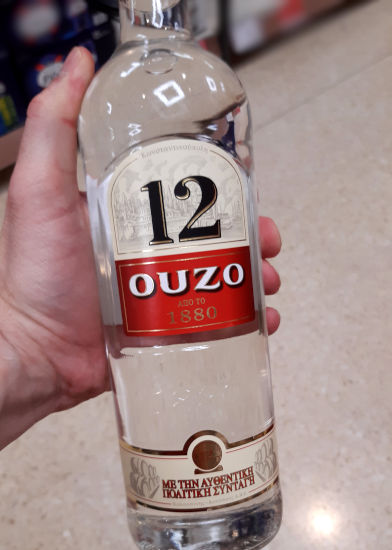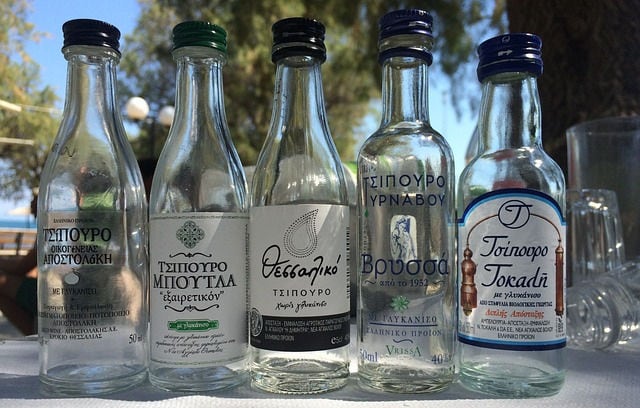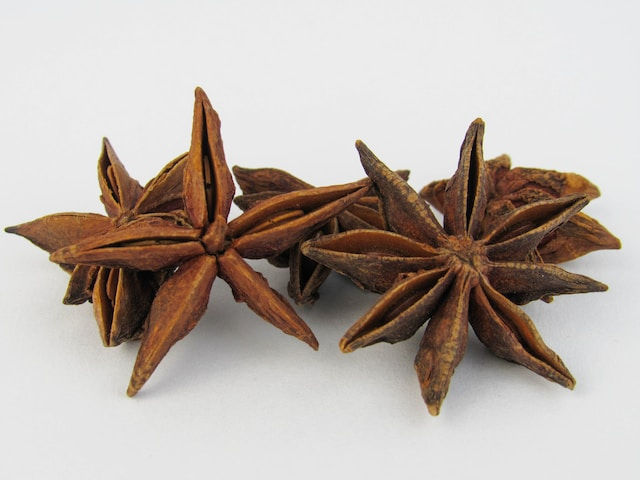The name Ouzo instantly transports me to sunlit Greek terraces, the distant murmur of the Aegean, and the clinking of glasses under a cerulean sky.
But how did this iconic drink come to symbolise the very spirit of Greece? Join me as I navigate the history of Ouzo, from 14th-century tipple to the darling spirit of modern mixology.

History Of Ouzo

Ouzo is Greece’s national drink, a potent anise-flavoured spirit widely consumed across the country and has become emblematic of Greek culture.
It’s clear and silky, and when water or ice is added, it turns milky white due to the anise oils – a phenomenon known as louching.
Ancient Ouzo Beginnings

The tale of Ouzo is as old as the very hills of Greece. Some say its origins lie with the monks of Mount Athos in the 14th century, distilling the spirit with a hint of anise.
Others argue its lineage traces back even further to “absinthites oinos”, an ancient Greek tipple that might have been a precursor to absinthe.
Monastic Brews to Family Stills
By the 19th century, Ouzo had moved from the secluded monasteries to the bustling streets, with family-run businesses taking the helm.
After the Greek War of Independence, many Greek families, particularly in Lesbos, began producing Ouzo.
The Varvayiannis family, for instance, started their Ouzo production in 1830 in Plomari, Lesbos, and their distillery remains one of the most renowned Ouzo producers today.
Modern Revival

While Ouzo faced stiff competition with the influx of global spirits, it’s now enjoying a renaissance. From the shores of Greece, Ouzo has journeyed to bars and homes across the world, enchanting palates and winning hearts.
Interestingly, Ouzo received a Protected Designation of Origin (PDO) from the European Union, meaning that only Ouzo made in Greece can bear the name ‘Ouzo’ (similar to Champagne in France).
The best Ouzo brands, while paying homage to tradition, are experimenting and innovating, adding their unique twists and introducing Ouzo to a whole new generation.
Now, of course Ouzo can be enjoyed neat or paired with water. However, my article on the 12 Best Ouzo Cocktails is an excellent resource for Ouzo mixology enthusiasts.
Ouzo Production

In 1932, the Greek government set regulations for Ouzo production to ensure its quality and authenticity. This was a pivotal moment in Ouzo’s history, as it set the drink apart from other anise-flavoured spirits such as Raki or Arak.
The production of Ouzo is a blend of art, science, and tradition. It starts with grape-based alcohol, which is then redistilled with aniseed and other botanicals like fennel, cloves, and coriander.
Ouzo is aged in stainless steel tanks for several months. This ageing process allows the flavours to meld and mellow, resulting in a smoother spirit.
Before bottling, water is added to bring the alcohol content down to around 40%. This also enhances the aromatic characteristics of the drink.
The Essence of Ouzo
The unmistakable hint of anise gives Ouzo its signature taste. But there’s more – a symphony of flavours from fennel to cloves, each sip is a revelation.
The Ouzo Effect: Add a splash of water or a cube of ice, and watch the clear liquid turn a cloudy white. This louching is a mesmerising dance of science and spirit.
Food Pairings

Mezedes and More: Ouzo demands company and traditional Greek fayre such as mezedes, the delightful little bites that are a staple of Greek tavernas.
Below is a rather helpful food pairing table I created for the article 12 Best Ouzo Cocktails: Modern Mixology.
| No. | Food | Description |
|---|---|---|
| 1 | Grilled octopus | Grilled octopus is a classic Greek dish that is perfectly complemented by the anise-liquorice flavour of ouzo. |
| 2 | Saganaki | Saganaki is a fried cheese dish with a salty, creamy flavour that is a great match for the sweetness of ouzo. |
| 3 | Mussels in ouzo sauce | A flavorful dish that is perfect for a light meal, as the briny taste of the mussels is enhanced by the anise notes of ouzo. |
| 4 | Calamari | The salty flavours of calamari pair well with the strong taste of ouzo. |
| 5 | Feta cheese | The anise flavour of ouzo cuts through the richness of feta cheese and adds a touch of complexity. |
| 6 | Taramosalata | The briny flavour of taramosalata (fish roe) is a great match for the anise notes of ouzo. |
| 7 | Meze | There are many different types of meze; Ouzo works best with grilled meats, seafood, and cheeses. |
| 8 | Souvlaki | Souvlaki is a grilled skewered meat dish with a smoky flavour of the meat and is a great match for the anise notes of ouzo. |
| 9 | Pastitsio | Pastitsio is a Greek lasagna dish made with pasta, béchamel sauce, and ground beef, balanced by the anise notes of ouzo. |
| 10 | Baklava | Baklava is a sweet pastry that is made with layers of phyllo dough, nuts, and honey, offering a nice contrast to the anise notes of ouzo. |
Personal Musings

On a personal note, my love affair with Ouzo began on a balmy evening in Athens. The Acropolis stood tall, a sentinel of history, as I took my first sip.
It was a heady mix of flavours, memories, and emotions. Over the years, writing for the Drinks Geek, I’ve sipped on spirits from across the globe, but Ouzo, much like French Pastis with its rich tapestry of tales, holds a special place.

Conclusion
Ouzo is more than a drink; it’s a narrative, a chronicle of Greece’s glorious past and vibrant present. It’s the laughter in a taverna, the whisper of the olive trees, and the rhythm of the sirtaki.
As I often say, to truly know Greece, you must savour its Ouzo. Here’s to many more tales and toasts. Yamas!
Also Read: 7 Sambuca Brands Full Of Italian Flair
References

Further Reading
Below are some additional articles from The Drinks Geek blog. We write articles on several fascinating areas of drinks, including different brands, drink types, cocktail recipes and more.







